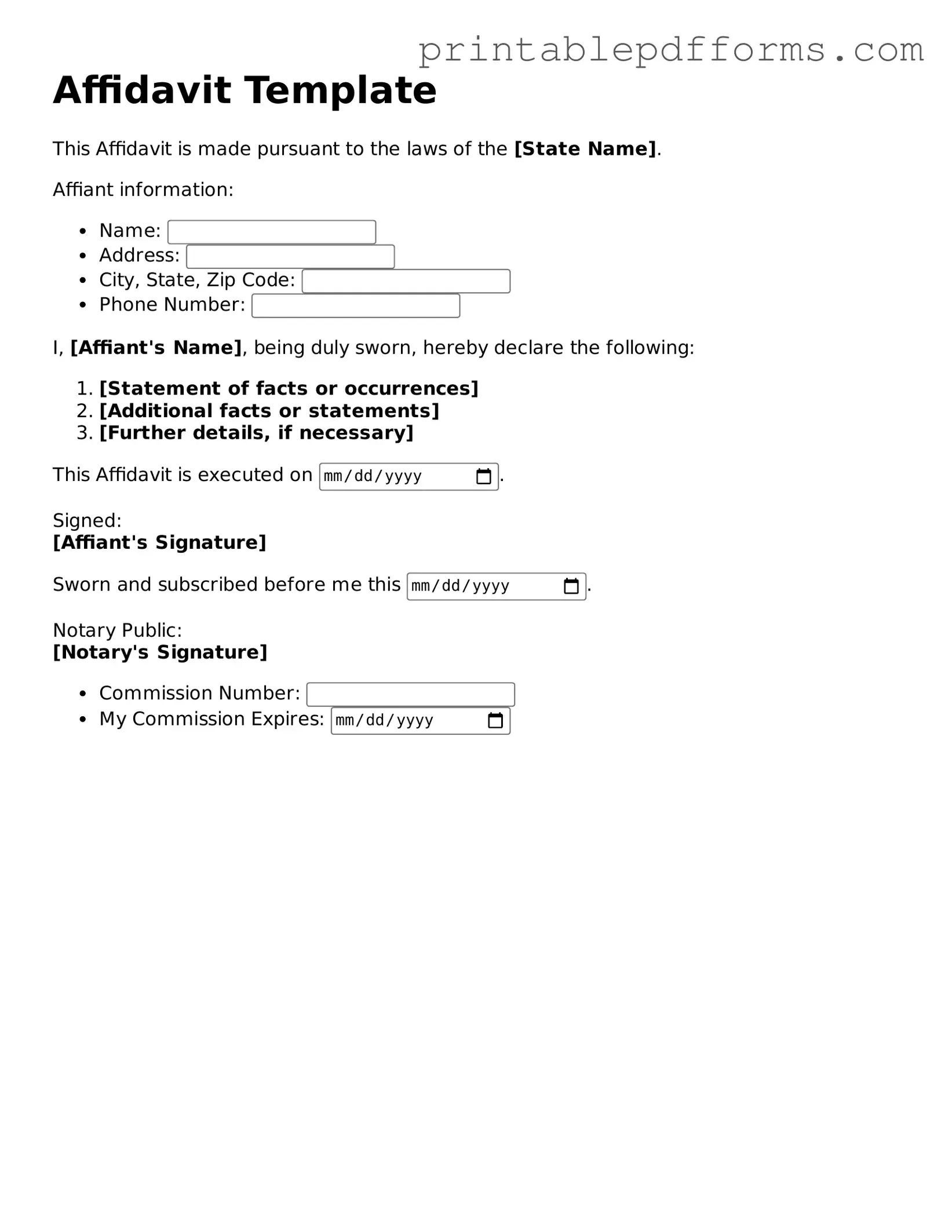What is an affidavit?
An affidavit is a written statement that a person swears is true. It is typically used in legal settings to provide evidence or support for a case. The person making the affidavit, known as the affiant, must sign it in front of a notary public or another authorized official.
When do I need to use an affidavit?
Affidavits are commonly used in various situations, including:
-
Supporting court cases, such as divorce or custody disputes.
-
Providing proof of identity or residency.
-
Confirming the details of a transaction or agreement.
-
Submitting evidence in administrative proceedings.
To complete an affidavit form, follow these steps:
-
Provide your full name and address at the top of the form.
-
Clearly state the facts you are attesting to. Be concise and specific.
-
Sign the affidavit in front of a notary public or authorized official.
-
Ensure the notary public signs and stamps the document, if required.
Do I need a lawyer to create an affidavit?
No, you do not necessarily need a lawyer to create an affidavit. However, consulting with one can be beneficial, especially if the affidavit is for a complex legal matter. A lawyer can help ensure that your affidavit meets all necessary legal requirements.
While there is no universal format, most affidavits include the following elements:
-
The title "Affidavit."
-
The affiant's name and address.
-
A statement of facts, clearly numbered or bulleted.
-
A declaration that the information is true to the best of the affiant's knowledge.
-
The signature of the affiant and the notary public.
Can I change an affidavit after it has been signed?
Once an affidavit is signed and notarized, it cannot be changed. If you need to correct or add information, you will have to create a new affidavit. The new affidavit should reference the original and explain the changes made.
What happens if I lie in an affidavit?
Lying in an affidavit is considered perjury, which is a serious offense. If someone is found to have provided false information, they could face legal penalties, including fines and imprisonment. It is crucial to ensure that all statements made in an affidavit are truthful and accurate.
Where do I file an affidavit?
The filing location for an affidavit depends on its purpose. Common places to file include:
-
Courts, if the affidavit supports a legal case.
-
Government agencies, for matters like immigration or licensing.
-
Financial institutions, for verifying identity or transactions.
Always check the specific requirements of the entity where you are submitting the affidavit.
